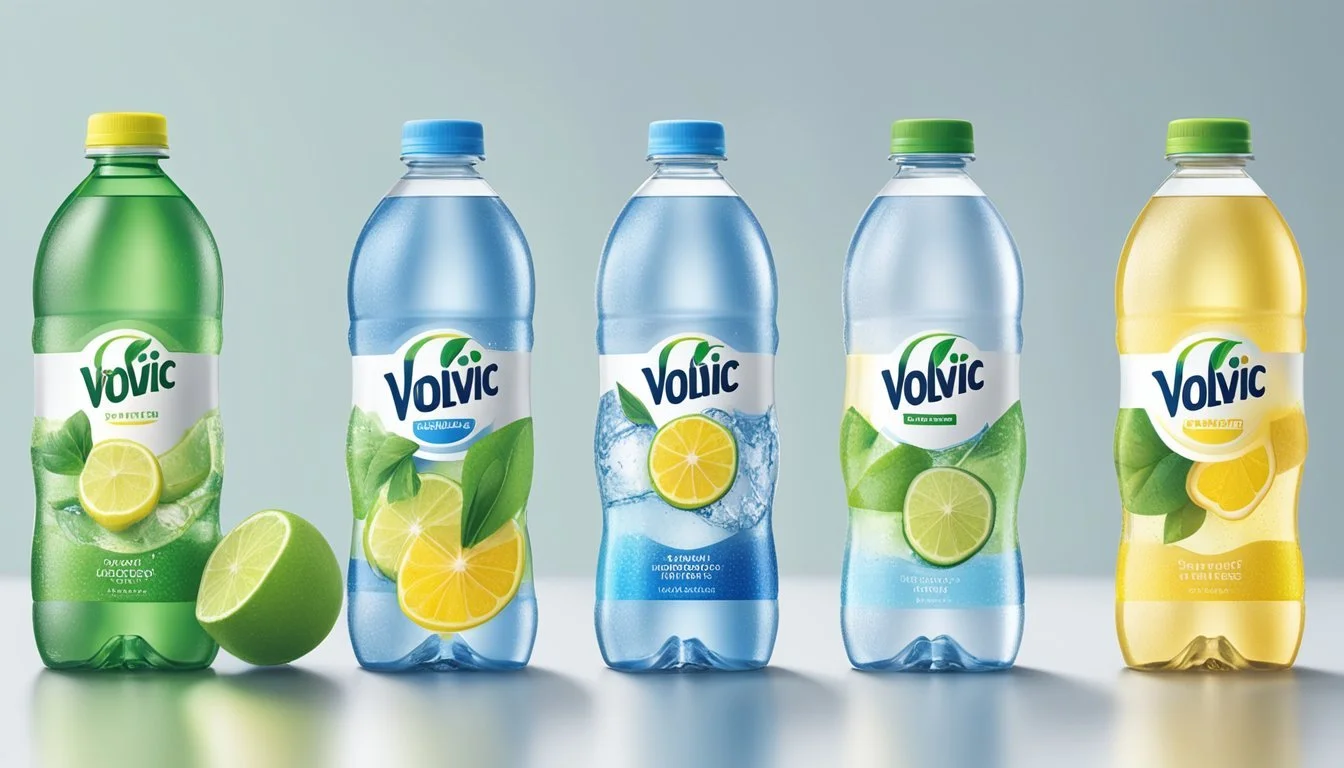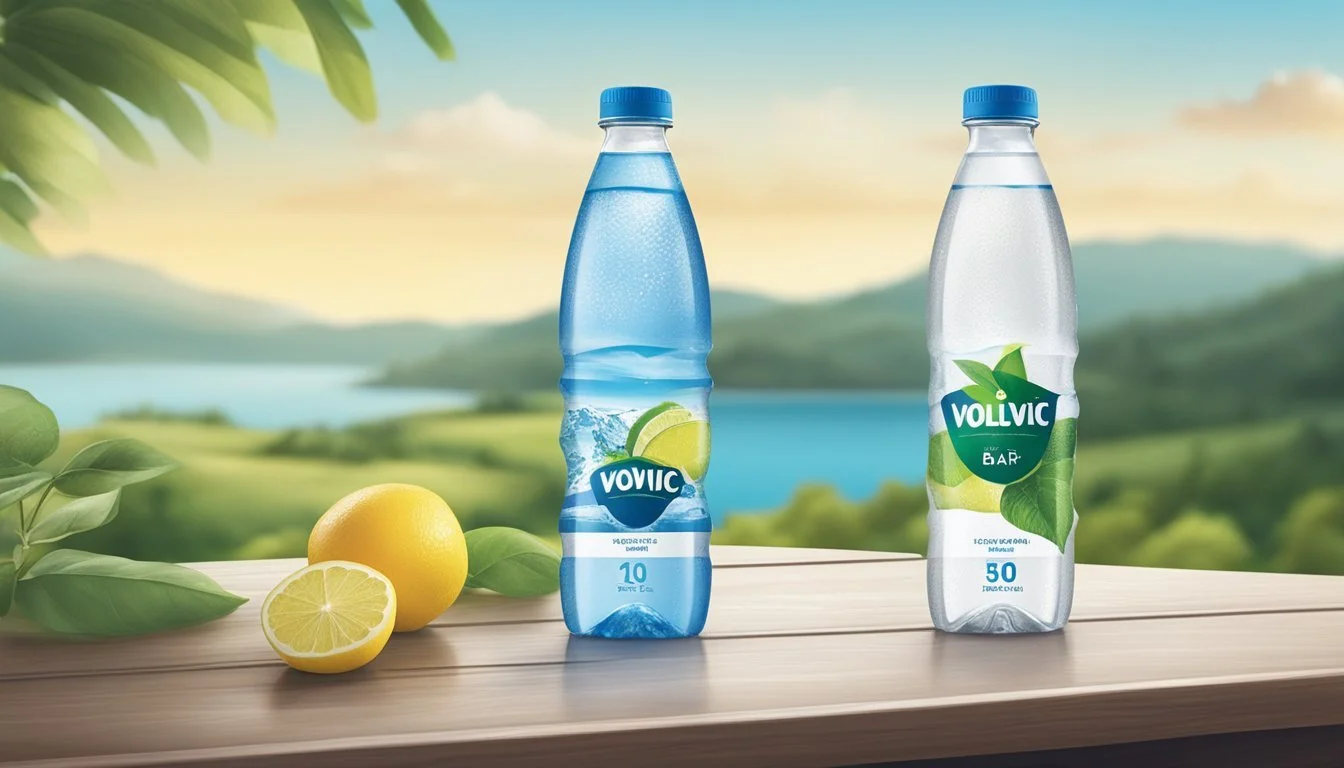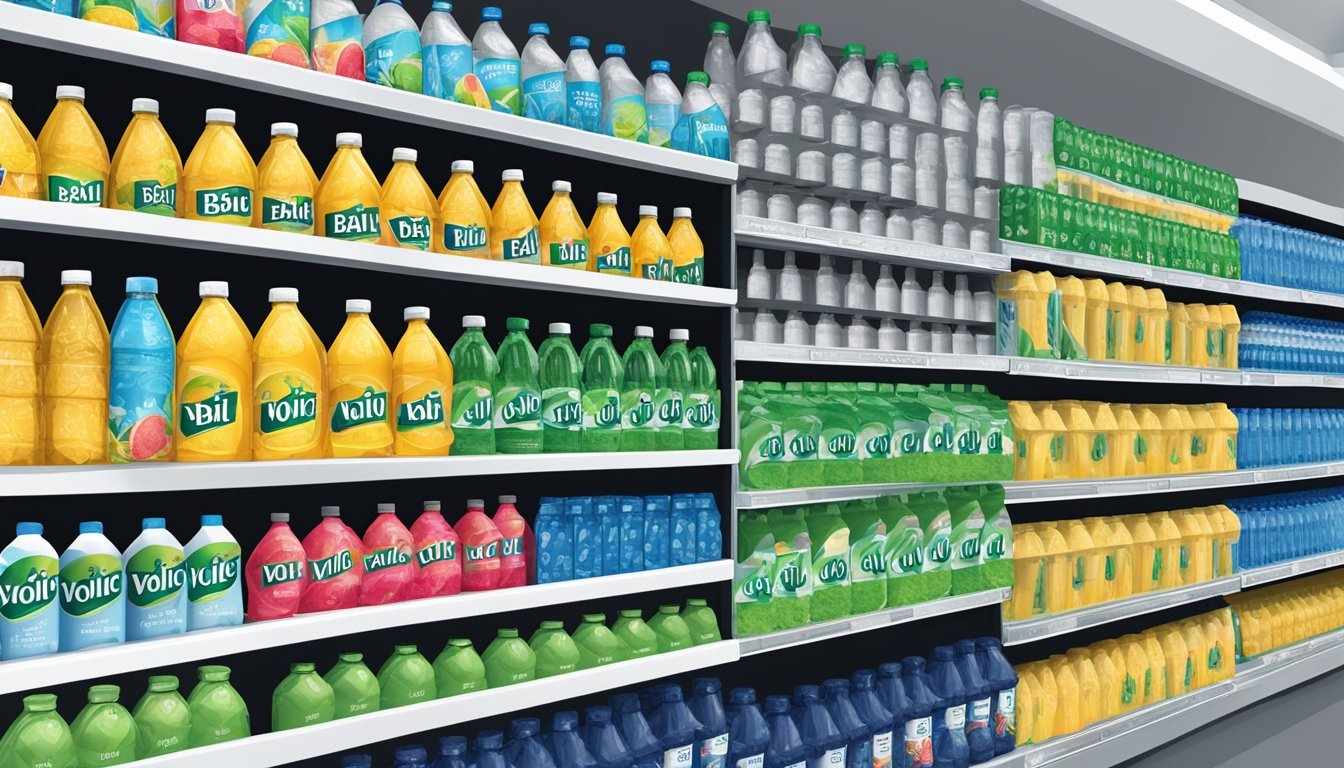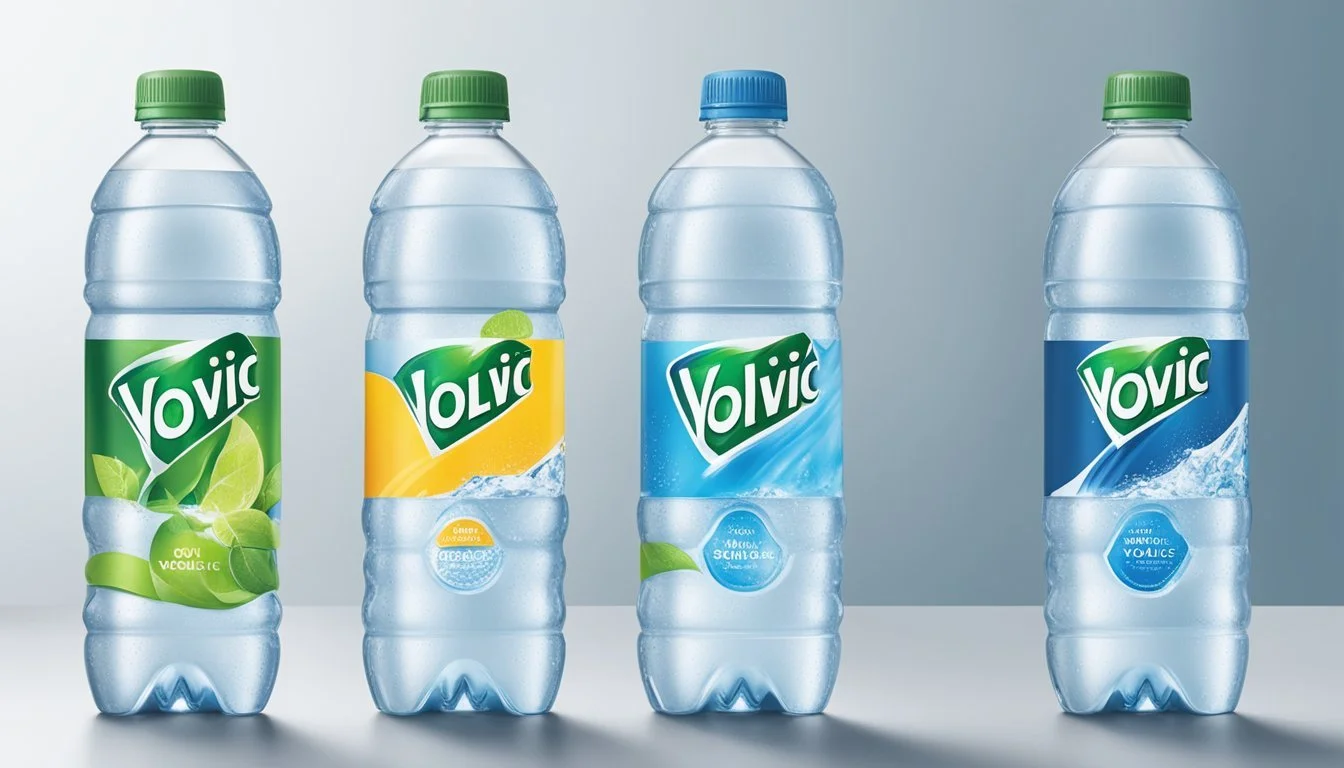Bai vs. Volvic
A Comparison of Bottled Water Quality and Taste
In the realm of bottled water, consumers are presented with a multitude of choices, each brand offering unique selling points. Two such brands, Bai and Volvic, stand out for their distinctive characteristics. Bai has carved a niche for itself by infusing water with antioxidants from the coffee fruit extract, coupled with the subtle sweetness derived from erythritol and stevia. Each Bai bottle is low in calories and aims to deliver more than just hydration by offering a boost in vitamins, particularly vitamin C.
Volvic water, on the other hand, takes pride in its volcanic heritage. Originating from the Auvergne volcanic region in France, Volvic is naturally filtered through volcanic rocks, which enriches it with minerals and electrolytes. It is this process that gives Volvic its reputed taste and purity. Unlike Bai's antioxidant-infused offerings, Volvic focuses on delivering a natural mineral water with a consistent quality and clean taste that has been loved for years.
While both Bai and Volvic vie for the attention of health-conscious hydrators, their approaches cater to slightly different preferences. Bai might appeal to those seeking flavored hydration with additional health benefits, and Volvic may be favored by purists who appreciate the natural mineral content and origin story. Selecting between the two ultimately depends on individual priorities, whether it is the added health benefits and exotic flavors of Bai or the natural purity and mineral composition that Volvic provides.
Understanding Bottled Water
When choosing bottled water, one should consider the source, health benefits, mineral content, and purity. These elements contribute to the overall quality and suitability of the water for consumption.
Sources of Bottled Water
Bottled water comes from various sources, each with unique characteristics.
Spring Water: Often collected from natural springs, this type of bottled water is usually filtered but retains its natural mineral content.
Natural Spring Water: Harvested directly from springs where water naturally rises to the earth's surface, it is sometimes perceived as the purest form.
Mountain Spring Water: Originating from high-altitude sources, this water is often valued for its taste and purity.
Groundwater: Drawn from underground sources, such as aquifers, it can also be packaged as bottled water after treatment.
Health and Hydration Benefits
Bottled water provides hydration, which is essential for health. Here are some points for consideration:
Hydration: Crucial for bodily functions, hydration from bottled water is convenient for on-the-go lifestyles.
Health: Choosing purified or spring water can be a preference for those seeking specific health benefits or taste profiles.
Minerals and Electrolytes Content
The mineral and electrolyte content in bottled water can vary widely, affecting taste and potential health benefits.
Minerals: These include elements like calcium, magnesium, and potassium, which can naturally occur in spring water.
Electrolytes: Vital for bodily functions, electrolytes like sodium and potassium are found in different concentrations across bottled water brands.
By understanding these factors, one can make an informed choice between different bottled water options, such as Bai or Volvic, based on personal preferences and health considerations.
Brand Profiles
In analyzing the merits of Bai and Volvic, a closer examination of their backgrounds provides insight into their respective market positions within the crowded landscape of bottled water brands.
Bai: Brand Overview
Bai brands itself as a beverage company offering more than just bottled water. Their flagship products include antioxidant-infused drinks, which are marketed as combining health benefits with great taste. Bai's waters are also flavored and infused with antioxidants derived from coffee fruit and white tea extracts, intended to offer a unique value proposition within the market.
Volvic: Brand Overview
Volvic is a French brand known for its naturally sourced water. The water originates from the Clairvic Spring, located near the Puy de Dôme in France. Unlike Bai, Volvic's primary focus is on their mineral water, which is filtered through volcanic rocks, giving it a unique mineral composition and a reputation for purity. The brand is a competitors with other natural-source waters like Evian and Fiji.
Taste Profile
When comparing Bai and Volvic bottled waters, one is confronted with stark contrasts in taste profile owing to their distinct characteristics. Taste is influenced by factors like mineral content and pH levels, which play a significant role in the sensory experience of the consumer.
Flavor Characteristics
Bai: Bai beverages are infused with natural flavors, providing a distinct taste experience that is both fruit-forward and refreshing. They have a range of flavored waters offering tastes that span from tropical coconut to exotic berry varieties. Flavored variants often contain added ingredients, such as citric acid, affecting the overall acidity and taste profile. It's important to note that some Bai products might have a touch of sweetness due to the presence of sweetening agents.
Volvic: On the other hand, Volvic water is known for its purity, emanating from the volcanic region of Auvergne in France. The mineral composition, including calcium and magnesium, delivers a clean, crisp taste, often described as smooth and refreshing. Volvic is a pure alkaline water, with a pH level typically above 7, indicating a basic tendency. The mineral content of Volvic is reflected subtly in its taste, adding a slight mineral undertone discernible by sensitive palates.
Consumer Taste Preferences
Consumer preferences in water taste vary greatly, with some favoring the enhanced and varied flavors offered by brands like Bai, while others prefer the natural, untainted taste of mineral waters like Volic. Consumer taste preferences can be guided by individual attributes such as a taste's freshness, sweetness, and purity level. Those who favor neutral or natural-tasting water might gravitate towards Volvic due to its unflavored, mineral-rich composition. Others seeking an alternative to sugary beverages, yet still desiring a hint of flavor, might find Bai's array of flavored waters more appealing.
In terms of taste, Bai caters to a broader audience with its variety of sweetened flavored waters, whereas Volvic appeals to consumers who appreciate the subtle, mineral-derived taste of natural water sources. The pH levels can also influence consumers' choices, with some having a preference for the alkaline nature of Volvic's water which is believed by some to offer health benefits, though these claims are often debated. Bai and Volvic both deliver distinct taste experiences aligned with their unique brand offerings—the former provides flavorful hydration, and the latter offers a mineral water taste shaped by its volcanic origin.
Nutritional Comparison
When comparing Bai and Volvic bottled waters, it's crucial to examine their nutritional profiles focusing on caloric content, sweeteners, and the presence of added nutrients such as vitamins and minerals.
Caloric Content and Sweeteners
Bai Water:
Calories: 10 calories per bottle
Sugar: Contains 1 gram of sugar
Sweeteners: Uses erythritol and stevia as sweeteners
Volvic Water:
Calories: Zero calories
Sugar: No sugar
Sweeteners: Free from any sweeteners
Bai Water offers a slightly sweet taste with minimal calories due to its low sugar content and the use of natural sweeteners, making it a choice for those watching their calorie intake but still preferring some sweetness. In contrast, Volvic is characterized by its zero-calorie content and absence of both sugar and sweeteners, presenting itself as a pure option without any added taste.
Vitamins and Added Nutrients
Bai Water:
Vitamins: None reported
Mineral Content: Contains antioxidants sourced from coffee fruit extract and tea extract
Volvic Water:
Vitamins: None reported
Mineral Content: Naturally endowed with minerals such as calcium and magnesium due to its volcanic filtration
While Bai Water doesn't boast added vitamins, its unique selling point rests on its antioxidant content, which can appeal to those looking to supplement their diets with beneficial compounds. Conversely, Volvic Water, having trickled through volcanic rock, naturally contains essential minerals making it not just hydrating but also a source of electrolytes.
Environmental and Health Considerations
When choosing between Bai and Volvic bottled water, consumers may want to consider the environmental impact and health implications associated with plastic use, sustainability of the water source, and the potential for contaminants.
Plastic Use and BPA Content
Bai and Volvic products typically come packaged in plastic bottles. Plastic consumption contributes to environmental waste, and its production has a significant carbon footprint. It's critical to examine whether these bottles contain Bisphenol A (BPA), a chemical that, when leached into water, can pose health risks. Volvic states that its bottles are BPA-free, targeting health-conscious consumers who are concerned about chemical exposure. Bai has not publicly stated an official position on BPA content.
Sustainability and Water Source Impact
Sustainability practices are vital for preserving natural water sources. Volvic water is sourced from a natural spring in France, and the company emphasizes its commitment to minimizing environmental impact and preserving the integrity of its source. Bai, known for infusing water with fruit flavors, does not disclose specific information about the sustainability of its sources. The impact on local water supplies and ecosystems from both brands’ bottling operations can be significant, potentially affecting local environments and animal species.
Potential Contaminants
The purity of bottled water is often scrutinized. Contaminants can include anything from minerals and electrolytes to harmful substances. Volvic's spring water undergoes filtration that removes potential contaminants while retaining beneficial minerals. Bai promotes that their beverages are infused with antioxidants and other healthful additives, yet they must also ensure the purity of their water to maintain consumer trust. Both brands are subject to regulatory standards that aim to limit contaminants to safe levels, and they must regularly test their products to ensure these standards are met.
Market Presence and Accessibility
Selecting bottled water often hinges on its availability and the extent of its brand reach. Both Bai and Volvic waters are notable in their respective markets, yet their presence in stores and international accessibility differ due to various factors, such as distribution agreements and brand recognition.
Availability in Stores
Bai: Bai beverages, known for incorporating the coffee fruit into their products, have a significant presence in grocery stores across the United States. They typically offer a variety of flavored water products which can be found in:
Chilled beverage sections
Health and wellness aisles
Checkout lane coolers
Volvic: Volvic, a brand that prides itself on its volcanic filtration process, may not be as readily available as Bai in every grocery store. Its distribution is more selective, often placed in:
Specialty food aisles
Imported goods sections
High-end supermarkets
Global Brand Reach
Bai is primarily focused on the North American market, but it is branching out internationally, building on its unique branding as a health-focused water blended with antioxidants from the coffee fruit.
Volvic, on the other hand, enjoys a wider global reach due to its long-standing presence in the bottled water market as a popular brand. Originating from France, Volvic is distributed in many countries worldwide, making it a familiar sight on the shelves of:
European supermarkets
Asian markets
Global travel retail outlets
Both Bai and Volvic are competitors in the bottled water arena, with Bai appealing to those seeking innovative flavors and wellness benefits, and Volvic resonating with consumers looking for natural mineral water from a well-established brand.
Consumer Preferences and Trends
When choosing bottled water, consumers are increasingly guided by dietary requirements, innovative flavors, and functional benefits. These preferences shape the market for brands like Bai and Volvic.
Dietary Considerations
Bai and Volvic waters cater to consumers with strict dietary constraints. Bai offers beverages that are gluten-free and vegan, with no added preservatives, aligning with dietary trends that emphasize natural ingredients. Volvic, sourced from volcanoes, is naturally gluten-free and suitable for consumers monitoring their blood pressure due to its electrolyte composition.
Innovation in Flavors and Ingredients
Consumers favor unique flavor experiences and natural flavors without compromising health benefits. Both Bai and Volvic have responded with their versions of flavor-infused water. Bai stands out with its Antioxidant Infusion drinks, leveraging natural flavors that offer low-calorie options. Volvic highlights its pure taste profile but has also experimented with naturally flavored variants to satisfy consumer desire for innovation.
Bai: Bold flavors like Brasilia Blueberry and Costa Rica Clementine.
Volvic: Traditional, pure taste with occasional limited-edition flavored releases.
Caffeine and Functional Additives
The trend towards functional beverages includes the addition of caffeine and other energy-boosting ingredients. Bai capitalizes on this by infusing some of its waters with a modest amount of caffeine extracted from white tea or coffee fruit, providing an energy boost without the high calorie count. Although Volvic does not typically add caffeine, it emphasizes the natural electrolytes and minerals found in its water, promoting overall well-being and hydration.
Bai: Contains about 55 mg of caffeine per bottle.
Volvic: Markets the electrolytes and minerals for hydration without caffeine.
Final Verdict
In the comparison between Bai and Volvic bottled water, consumers often consider several key factors: hydration, taste, health, nutrition, and environmental impact. Both brands provide essential hydration, but the mineral content and source of the water contribute to health and taste.
Volvic water originates from volcanoes in France, naturally filtering through volcanic rock which enhances it with minerals. This not only impacts its taste but also its nutritional value, providing electrolytes like magnesium and calcium. Bai waters, known for their antioxidant infusion, offer a different approach to health: their beverages contain added vitamins and are flavoured with fruit essences.
When it comes to environmental impact, Volvic states their commitment to sustainability, claiming their bottles are 100% recyclable. Bai does not focus heavily on environmental initiatives but does offer a PET bottle which is also recyclable.
On the taste front, Bai's variety of fruit-flavored waters provide an alternative to plain water, potentially increasing appeal for those who prefer flavored beverages. Volvic offers a pure taste that many prefer in a traditional bottled water.
Here's a brief comparison of Bai and Volvic:
Factor Bai Volvic Hydration Good Good Taste Fruit-infused flavors Neutral/mineral-rich Health Vitamin-enhanced Natural minerals Nutrition Antioxidants present Electrolytes present Environmental Impact Recyclable PET bottles 100% Recyclable claims
Choosing between Bai and Volvic depends on an individual's preference for added flavors and antioxidants versus natural mineral content and the taste of pure water. Both have their merits and cater to different tastes and health considerations.






